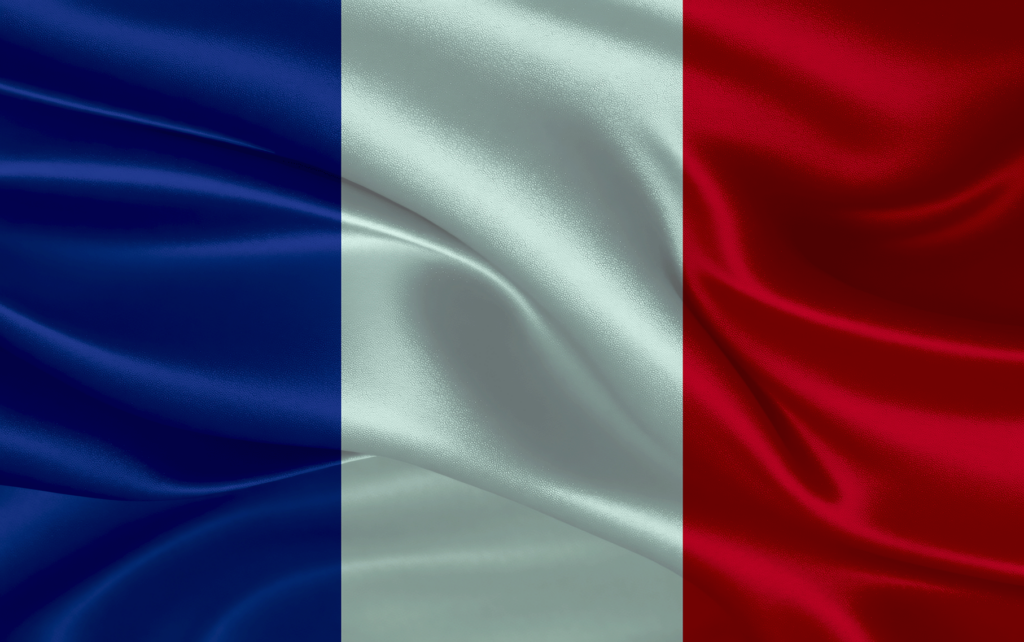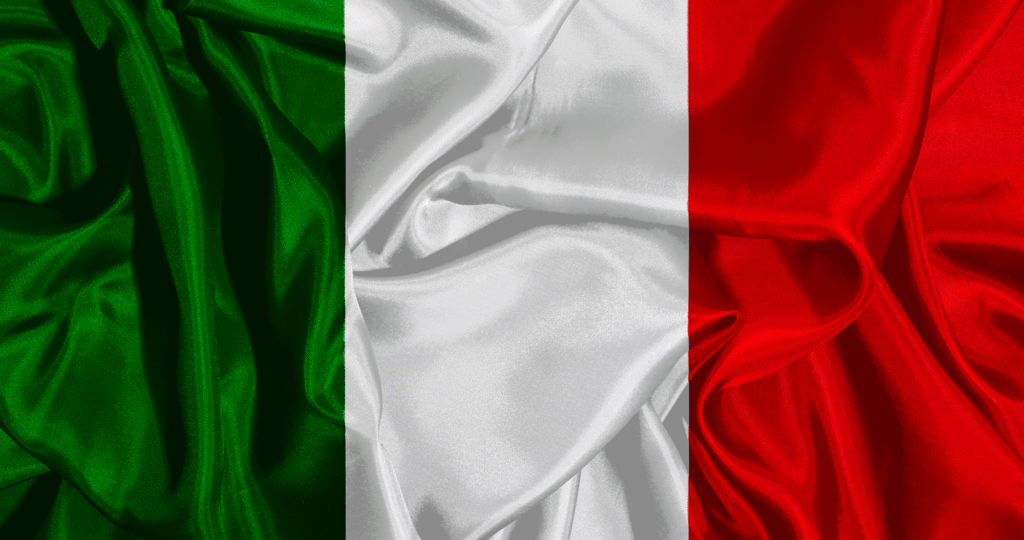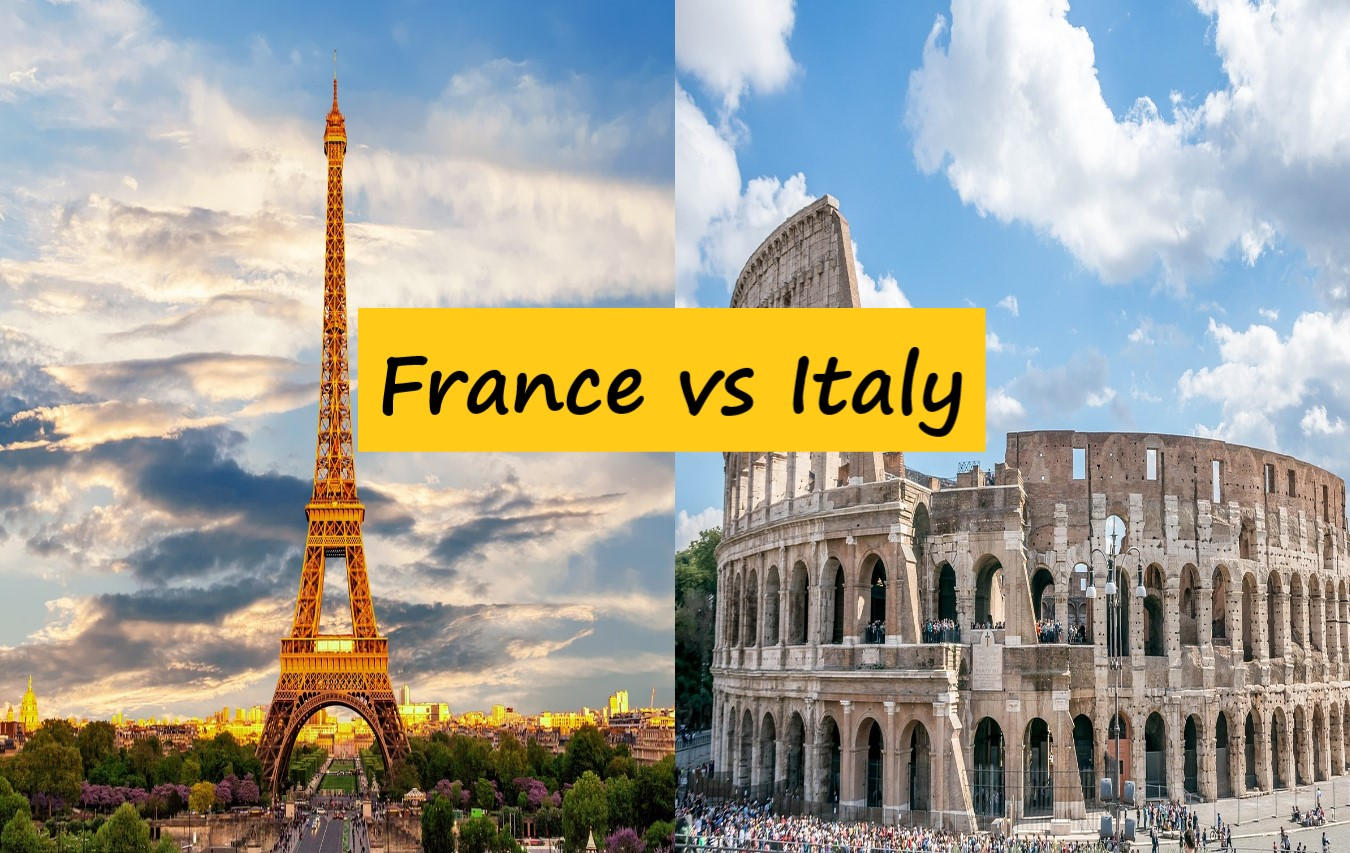- e-mail us
- We are Open
Comparison of immigrating France & Italy
- Home
- Comparison of immigrating France & Italy

VS


Comparison of Immigration and Living Conditions
There are key points in comparing France and Italy regarding immigration and living conditions. Both countries have a long history of immigration, but France has implemented more extensive integration policies and programs, leading to a higher absorption rate of immigrants. Italy, on the other hand, often faces challenges such as irregular immigration. The quality of life in both nations is commendable. France is particularly appealing due to its excellent infrastructure, top-notch health services, and rich cultural activities. Italy also boasts a high quality of life, emphasizing family values, tranquil living, and a rich cultural heritage. Consequently, both countries, with their unique differences and attributes, offer attractive destinations for immigrants seeking a peaceful and productive life. For more information and free consultation, you can contact Talav Company.

Topics covered in this article:
– Comparison of Immigration in France & Italy
– Comparison of Life in France & Italy
– Comparison of Education in France & Italy
– Comparison of Work in France & Italy
– Comparison of Investment in France & Italy
– Comparison of Cost of Living in France & Italy
– Comparison of French & Italian Languages
– Comparison of Landscape & Climate in France & Italy
– Comparison of Attractions in France & Italy
– Comparison of Food & Drink in France & Italy
– Comparison of Art & Culture in France & Italy
– Commonly Asked Questions
– Last words
Comparison of Immigration in France & Italy
Here we’ll contrast immigration to France and immigration to Italy, emphasizing expenses, prerequisites, and necessary paperwork.
|
Conditions |
France |
Italy |
|
Visa Fee |
A short-term Schengen visa (for tourism, family visit or business) usually costs around 80 euros |
A short-term Schengen visa usually costs around 80-120 euros |
|
Residence permit fees |
A residence permit for the first time may cost around 269 euros |
A residence permit for employment purposes may cost around 40 to 200 euros depending on the length of stay |
|
Health insurance costs |
Health insurance is mandatory in France. Costs can vary depending on factors such as age, health status, and level of coverage. On average, health insurance premiums in France range from €50 to €200 per month |
Health insurance is also mandatory in Italy for residence permit applicants. Costs vary depending on factors such as age and level of coverage, with average premiums ranging from €50 to €150 per month. |
|
Language proficiency requirements |
It is usually assessed through language tests such as DELF or DALF |
It is usually assessed through tests such as CILS or CELI |
Immigration Conditions: When it comes to conditions between the two nations, your perspective and objectives should guide your decision. Generally speaking, Italy is often regarded as more budget-friendly than France, particularly concerning housing costs like rent and property prices. While major cities like Milan or Rome might be exceptions due to high demand, smaller urban areas and suburbs can offer a decent standard of living at a lower expense. Additionally, France’s job market and economy might present advantages over Italy’s.
Required Documents: Typically, the necessary paperwork for a French visa comprises a valid passport, a filled-out visa application form, passport-sized photos, proof of residency, travel insurance, financial means (such as bank statements or a sponsorship letter), and supplementary documents depending on the visa type. For an Italian visa, required documents typically encompass a valid passport, a completed visa application form, passport-sized photos, proof of residency, travel insurance, financial resources (bank statements or a letter of financial support), evidence of ties to your home country, and additional paperwork.
Comparison of Life in France & Italy
Comparing France and Italy for living can be intricate and contingent upon individual needs and preferences. However, here are some key points juxtaposing Italy and France:
Economy & Job Market
France: Renowned as one of Europe’s economic powerhouses, France offers a diverse array of employment opportunities spanning innovation, management, tourism, and traditional trades.
Italy: Italy boasts a sizable economy, with job sectors like design, cartography, automotive, and the culinary industry being prominent. The Italian labor market possesses its unique allure.
Life of cities
France: French cities are renowned for their charm, cultural vibrancy, and diverse lifestyles. Paris, as the capital, entices with its museums, palaces, and vibrant social scene. Other cities like Lyon, Marseille, and Nice also boast significant attractions.
Italy: Italian urban centers are celebrated for their rich historical and cultural heritage. Rome, the capital, thrives with bustling markets, historic churches, and ancient landmarks. Florence, Venice, and Milan also offer an abundance of cultural treasures.
Climate
France: The climate in France varies from the coastal regions in the south to the mountainous areas in the Alps and Pyrenees. While some regions experience cold winters, others enjoy milder temperatures throughout the year.
Italy: known for its diverse climates, experiences cold winters in the north and milder winters in the southern regions. The climate tends to be warmer in the south.
Culture & Food
France: Revered as a global cultural hub, France is renowned for its arts, cuisine, and engineering prowess. French culinary delights, including cheeses, breads, chocolates, and wines, enjoy international acclaim.
Italy: holds a prominent status as a cultural epicenter, celebrated for its arts, culinary traditions, and engineering feats. Italian cuisine, with its iconic dishes like pizza, pasta, risotto, and a variety of cheeses, enjoys worldwide popularity.
Comparison of Education in France & Italy
Here we’ve outlined a comparison of Italy and France concerning educational opportunities and advantages. This assessment hinges on the preferences, aspirations, and personal circumstances of prospective students. Below are some key points for comparing studying in France and Italy:
Universities & Higher Education
Both France and Italy boast prestigious universities and higher education institutions, recognized in globally esteemed rankings such as the QS Rankings and Times Higher Education.
Language
In France, instruction is predominantly conducted in French, although a few institutions may offer courses in English. in Italy, the primary language of instruction is Italian, although certain colleges and disciplines may offer courses taught in English.
France | Italy |
American University of Paris | University of Bologna |
Sciences Po | University of Milan |
University of Paris | Sapienza University of Rome |
Sorbonne University | University of Florence |
Paris-Sud University | Politecnico di Milano |
Ecole Normale Supérieure | University of Padua |
Costs & Academic Opportunities
In Italy, tuition fees fluctuate depending on the course and academic level pursued. Generally, the cost of education in Italy ranges between 1000 and 4000 euros annually. Additionally, students should factor in living expenses, which typically range between 700 and 1000 euros per month.
In contrast, France offers comparatively lower education costs. For non-EU students, tuition fees in France hover around €2,770 per year. EU students benefit from even lower tuition fees, averaging around 170 euros annually. Moreover, the estimated monthly living expenses in France range from 800 to 1000 euros.
Comparison of Work in France & Italy
France vs. Italy: A Comparison in the World of Work entails several facets that can sway one’s decision. Here are some key contrasts between the two countries:
Working Hours:
France typically maintains a shorter working week compared to Italy. The standard work week in France stands at 35 hours, while in Italy, it’s usually around 40 hours. This distinction can significantly impact the overall work-life balance for employees in each nation.
Market and Economy:
Both France and Italy boast robust economies with diverse industrial landscapes. France generally commands a larger economy, with sectors like aerospace, automotive, and tourism playing pivotal roles. Italy, too, possesses a varied economic portfolio, with industries such as fashion, automotive, and food manufacturing contributing significantly to its GDP.
High-Paying Positions:
Opportunities for lucrative roles exist in various industries in both countries. In France, high-paying positions can be secured in sectors like finance, technology, and healthcare. Similarly, in Italy, industries such as fashion, automotive, and engineering often offer well-compensated positions.
Labor Market Dynamics:
Both nations uphold labor laws aimed at safeguarding workers’ rights and ensuring equitable treatment in the workplace. However, disparities may arise concerning job security and benefits provided to employees.
Comparison of Investment in France & Italy
Capital Markets:
France boasts a dynamic and expansive capital market, ranking among Europe’s largest financial markets. The Paris Stock Exchange (Euronext Paris) stands as a prominent stock exchange in Europe, offering diverse investment opportunities.
While Italy’s capital market is significant, it falls short in comparison to France. The Italian Stock Exchange (Borsa Italiana) serves as another crucial financial market in Europe, presenting various investment avenues.
Government and Regulatory Policies:
The French government actively encourages foreign investments and prioritizes industrial and economic advancement. Strong policies and investments across multiple sectors enhance the attractiveness of investment opportunities.
Italy also fosters economic growth and welcomes foreign investments. However, bureaucratic hurdles and fluctuations in regulations may present challenges for investors.
Infrastructure and Industrial Development:
France boasts exceptional infrastructure and thrives in industries such as aerospace, automotive, and information and communication technology (ICT) innovation. These sectors offer ample opportunities for investors.
Italy excels in industries such as fashion, automobile manufacturing, design, and manufacturing, providing attractive prospects for investment.
Economic Stability:
France maintains general economic stability, with governmental measures in place to sustain this stability and foster financial growth.
While Italy confronts challenges such as unemployment and public debt, it remains acknowledged as one of Europe’s largest and most significant economies.
Comparison of Cost of Living in France & Italy
Italy (Euro) | France (Euro) | life expenses |
600 – 1500 | 800 – 2000 | Housing cost (renting a two-bedroom house in the city center) |
40 – 80 | 50 – 100 | Grocery shopping (for one person per week) |
30 – 50 | 70 – 100 | Public transportation (monthly ticket) |
30 – 60 | 40 – 70 | Restaurant services (a three-person meal in the middle restaurant) |
80 – 120 | 100 – 150 | Electricity and gas (average monthly consumption) |
15 – 30 | 20 – 40 | Water and sewage (average monthly consumption) |
20 – 40 | 30 – 50 | Mobile and Internet (average monthly package) |
8-25 | 10 – 30 | The cost of entertainment and culture (for example, cinema or show tickets) |
400 – 800 | 500 – 1000 | Education costs (average for students) |
23 – 43% of annual income | 20 – 35% of annual income | Taxes (average per person) |
Comparison of French & Italian Languages
Comparing French and Italian reveals two European languages belonging to the Indo-European language family. These languages exhibit numerous differences and similarities:
-Both French and Italian utilize the Latin alphabet.
-Unlike Italian, French often features silent letters in its written form.
-Italian employs a larger number of letters compared to French.
-French holds global recognition as one of the official languages of the United Nations, whereas Italian is acknowledged as the official language of Italy.
-In a comparison between France and Italy, both languages wield significant influence in various domains such as culture, literature, technology, and tourism.
Comparison of Landscape & Climate in France & Italy
Scenery:
France stands as one of the world’s most sought-after travel destinations, renowned for its stunning landscapes, picturesque cities, and rich cultural heritage. From the majestic Alps to the sun-kissed beaches of the south, France boasts a wealth of natural beauty.
Italy ranks among the top global travel destinations, boasting historical cities like Rome, Florence, and Venice, along with breathtaking natural wonders such as lakes and the Alps. Italy’s rich cultural tapestry and ancient monuments add to its allure as a captivating destination.
Climate:
France exhibits a diverse climate across its regions, with three main zones: the north experiences a moderate climate, the central regions endure hot summers and cold winters, while the south enjoys a warm and dry Mediterranean climate.
Italy‘s climate is also diverse, predominantly characterized by a Mediterranean climate featuring hot summers, mild autumns, and cool winters. This climate pattern is conducive to coastal living and exploring historic cities.
Comparison of Attractions in France & Italy
France & Italy in terms of historical cities and sightseeing spots:
France
Eiffel Tower: An iconic symbol of France situated in Paris, drawing millions of visitors annually.
Mont-Saint-Michel: A picturesque island off the coast of Normandy, home to the historic Mont-Saint-Michel Abbey, renowned for its stunning architecture.
Historic Urban Centers: Cities such as Lyon, Marseille, Nice, and Bordeaux boast numerous attractions, including historic landmarks, diverse cultures, and architectural wonders.
Italy
St. Peter’s Basilica: Situated in Vatican City, it is revered as the central church of Christianity, attracting pilgrims and tourists alike.
Colosseum: A symbol of Rome, this ancient amphitheater is a major draw for tourists, offering insights into ancient Roman history and architecture.
Artistic Hubs: Cities like Florence, Venice, Rome, and Milan beckon tourists with their renowned artworks, priceless museums, and rich cultural heritage.
Comparison of Food & Drink in France & Italy
When comparing France and Italy in terms of food and drink, it’s an intriguing exploration due to the diverse cuisines and rich cultural heritage of both nations. Here are some distinctive features of food and drink in each country:
France: Quiche, a traditional French dish made with meat, vegetables, and various fillings, is prepared in diverse ways across the country. France is renowned as one of the world’s top consumers of mushrooms, with many local dishes incorporating this ingredient. The country produces an array of exquisite and delectable pastries and sweets that are highly appealing to tourists.
Italy: Pizza and pasta stand out as quintessential Italian dishes, celebrated worldwide for their flavors and versatility. Italian pasta dishes showcase a wide variety of shapes and flavors, forming a cornerstone of the country’s culinary tradition. Italy holds a prominent position as one of the leading producers of various cheeses globally. The nation’s mastery of gelato and the production of natural, flavorful juices are acclaimed internationally.
Comparison of Art & Culture in France & Italy
Comparing France and Italy in terms of art and culture is truly fascinating given their rich histories and profound global influence. Below is a comparison of France and Italy highlighting some important aspects of art and culture in each country:
France:
Art and Architecture: France stands as a global hub of art and architecture, boasting renowned historical cities like Paris, Loire, Versailles, and architectural marvels such as the Eiffel Tower.
Literature: French literature enjoys worldwide acclaim, with luminaries like Molière, Victor Hugo, Jules Verne, and Marcel Proust contributing iconic works that have left an indelible mark on the literary landscape.
Culinary Culture: France is celebrated as a culinary powerhouse, renowned for its haute cuisine, quality ingredients, and esteemed culinary traditions, with a plethora of renowned restaurants and exquisite pastries.
Italy:
Art and Architecture: Italy is revered as a cradle of art and architecture, featuring unique masterpieces by legendary artists like Leonardo da Vinci, Michelangelo, Raphael, Botticelli, and Donatello.
Literature: Italian literature boasts illustrious figures such as Dante, Petrarch, Boccaccio, and Manzoni, with numerous literary masterpieces crafted in the Italian language that have shaped the course of literature.
Culinary Culture: Italy is renowned for its iconic dishes like pizza, pasta, antipasti, risotto, and seafood, earning its reputation as a pioneer of delectable and high-quality cuisine worldwide.
Commonly Asked Questions
✔️ Are there any disparities between French and Italian artistic cultures?
Indeed, both nations boast unique artistic heritages. However, in France, there’s a greater emphasis on theater and music, while Italy’s focus leans more towards visual arts and architecture.
Is the climate of France distinguishable from that of Italy?
Absolutely, France typically experiences a more temperate climate, whereas Italy is characterized by a hot and arid Mediterranean climate.
✔️ When comparing France and Italy, which country is renowned for its culinary delights?
Both nations enjoy widespread recognition for their gastronomic prowess. While some may favor Italian cuisine, others may find French cuisine more enticing.
✔️ In comparing France and Italy, which country demonstrates greater economic development?
France boasts the largest economy and is recognized as one of the most advanced nations globally. However, Italy also maintains a sizable and dynamic economy.
✔️ Between Italy and France, which country draws the highest number of tourists?
Both nations are immensely popular tourist destinations, offering diverse attractions. Depending on individual preferences, travelers can opt for either of these captivating countries.
Last words
Comparing France and Italy is an engaging discourse. Both nations boast rich histories, vibrant cultures, breathtaking natural landscapes, renowned cuisine, and remarkable architecture. France beckons tourists with its artistic flair, impressive museums, and historic gems like Paris and the Loire Valley. Meanwhile, Italy captivates with its ancient masterpieces, artistic havens such as Rome and Florence, and delectable culinary delights.
Each country possesses its own distinct allure that appeals to travelers and tourists. Ultimately, the choice to visit France or Italy hinges on personal preferences, individual interests, and travel aspirations. However, one certainty remains: both nations offer an array of unforgettable experiences and cherished moments for visitors.
We’ve provided insights into the comparison between Italy & France. if you have further inquiries regarding this comparison, feel free to reach out to Talav Company.

for immigration & Travel
Useful Links
Warning! The information provided on this website is based on research conducted by non-legal professionals, and Talav Company does not assume legal responsibility for the accuracy or reliability of this content.
We highly recommend that you independently verify this information and consult with a qualified local attorney to ensure it is applicable to your specific situation.

